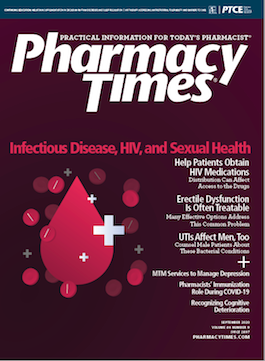Publication
Article
Pharmacy Times
CARES Act Covers OTC Medications, Menstrual Products
Author(s):
Key Takeaways
- The 2020 CARES Act allows FSAs and HSAs to cover OTC medications and menstrual products without a prescription, effective retroactively from January 1, 2020.
- On average, households can save $125 annually by using FSAs or HSAs for OTC purchases, aiding financial relief during economic downturns.
Under the 2020 CARES Act that Congress passed and signed into law on March 27, the items eligible for reimbursement by FSAs and HSAs include OTC medications and menstrual products.
Under the 2020 Coronavirus Aid, Relief, and Economic Security (CARES) Act that Congress passed and signed into law on March 27, the items eligible for reimbursement by flexible spending accounts (FSAs) and health savings accounts (HSAs) include, for the first time, OTC medications and menstrual products, such as cups, pads, and tampons.1
More than 50 million Americans use FSAs and HSAs to pay for dental and medical expenses not covered by traditional health insurance. These accounts were created in the 1970s to help people save money by allowing them to set aside a portion of their income into a pretax account to pay for dental and medical expenses with untaxed income.1
In 2010, the rules regarding eligibility of OTC products for coverage by FSAs and HSAs changed under the Affordable Care Act (ACA). The ACA expanded coverage so that OTC drugs could be covered by FSAs and HSAs, but only if they were purchased with a prescription.1
The 2020 CARES Act changed this requirement, making it possible for FSAs and HSAs to cover OTC products without a prescription. The law became effective immediately upon its passing in March and is retroactive to January 1, 2020, meaning that individuals can seek reimbursement for eligible purchases made at the beginning of the year. Additionally, this change is permanent, as there is no expiration date on this law.1
On average, American households spend $442 a year on OTC products.2 It is estimated that if these purchases were made through an FSA or HSA, the average household would be able to save about $125 a year, which is not an insignificant amount considering the potential for a prolonged recession.1
This year may also be a critical opportunity for people to use their FSA benefits on OTC products. FSAs and HSAs differ in that the funds in FSAs are generally forfeited at the end of the year if left unspent, while HSAs generally have no deadlines for their use. Many Americans who calculated their FSA contributions for 2020 before the coronavirus disease 2019 pandemic may have additional funds in their accounts due to cancelled dental or medical appointments. The additional coverage of OTCs may allow them to use the remaining funds in their accounts that would otherwise have been forfeited at the end of the year.1
FSAs and HSAs also differ in other ways. An FSA is a workplace account that can be used to pay for certain types of medical costs that come out of an individual’s pocket, such as insurance copays, prescriptions, and other health-related items and services. HSAs can be used to pay for a variety of medical costs and are only available with a qualifying high deductible health plan. Additionally, the account’s earnings can be invested, with the earnings from investments remaining tax free.1
However, FSAs and HSAs are both used to pay or reimburse for qualified medical expenses, as set by the Internal Revenue Service (IRS). Upon passage of the CARES Act, many OTC medications and menstrual products are now also included as qualified medical expenses.1
The determinations regarding which OTC products qualify as a medical expense under IRS guidelines are set by the Special Interest Group for IIAS Standards (SIGIS). The list of eligible products provided by SIGIS is considered the industry standard and is updated monthly.1 It is available for review at sig-is.org/about-sigis/news-events/cares-act.
Amid turmoil across the country, the OTC eligibility change may have gone unnoticed by many Americans who would otherwise have been interested in taking advantage of it. To support these Americans, retailers have the opportunity to educate shoppers about the eligibility change, which products are eligible, and how to use FSAs and HSAs to purchase them.1
For companies that offer OTC products, this eligibility change makes these products more accessible to more people. For example, ahead of the flu season, consumers can use their pretax money to stock up on OTC medications. This places more control in the hands of consumers over their own health and wellness.1
The expansion of OTC medication access and affordability not only benefits American consumers but also the US health care system overall.1 The Consumer Healthcare Products Association found that every dollar spent on OTC medicines can save more than $7 for the US health care system.2
Additionally, OTC medications provide effective and safe treatments for many common ailments, allowing people to avoid doctor’s offices, emergency departments, and urgent-care facilities during the pandemic and allowing our health care system to focus more energy and time on the crisis.1
REFERENCES
- FSA/HSA Info Sheet and FAQs [news release]. GlaxoSmithKline. Accessed August 7, 2020.
- Consumer Healthcare Products Association. White Paper: Value of OTC Medicines to the U.S. Healthcare System. Consumer Healthcare Products Association website. overthecountervalue.org/white-paper/. Published March 2019. Accessed August 7, 2020.

Newsletter
Stay informed on drug updates, treatment guidelines, and pharmacy practice trends—subscribe to Pharmacy Times for weekly clinical insights.






